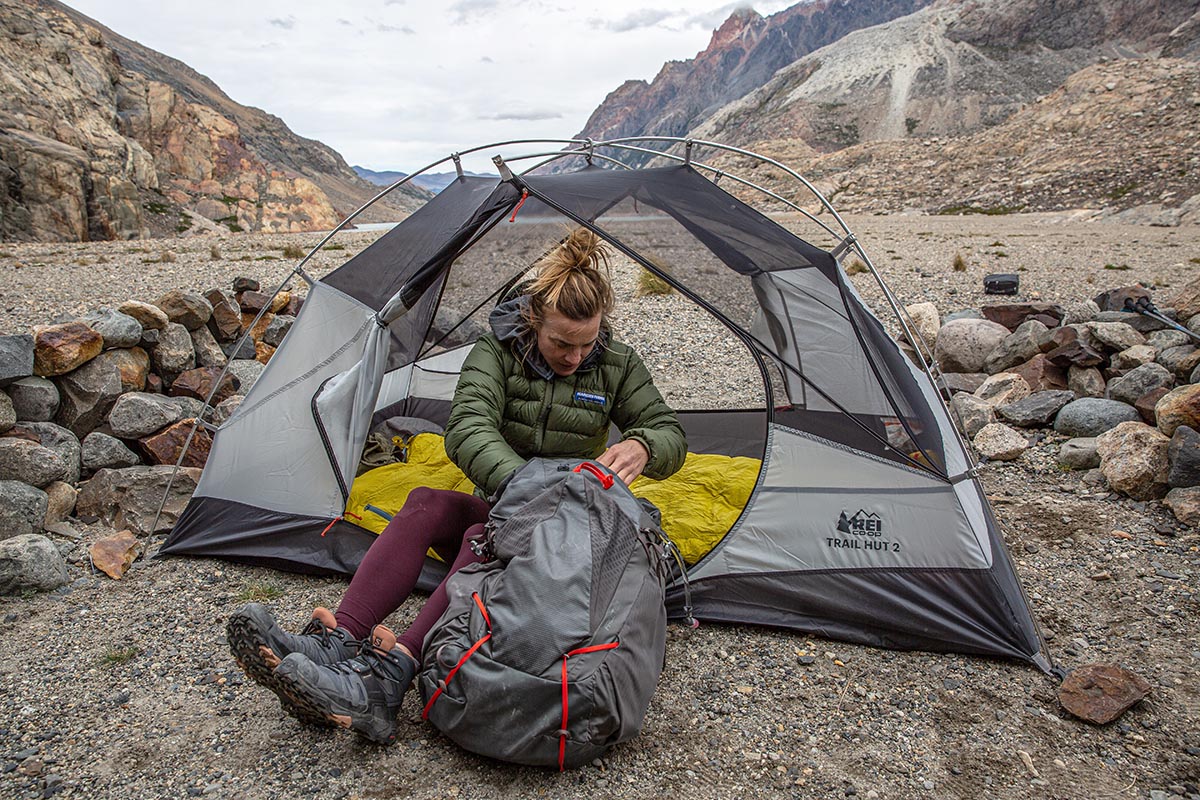
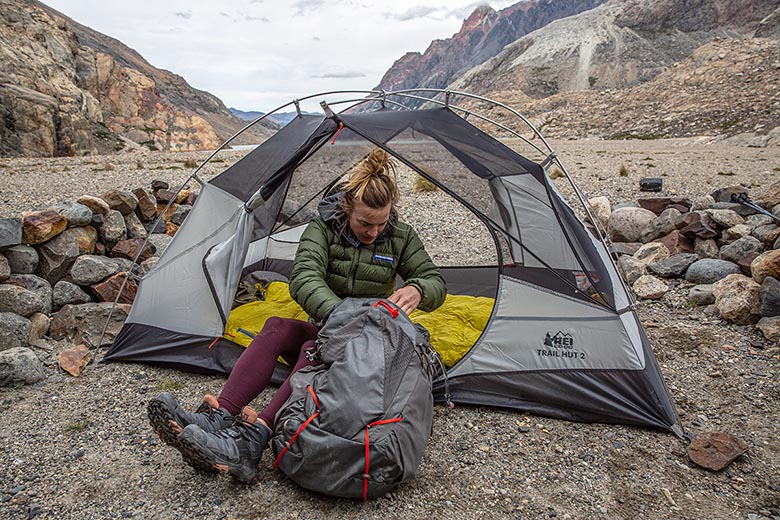
Price: $229
Packaged weight: 5 lb. 15 oz. (w/ footprint)
Floor denier: 66D
Capacities: 2P, 4P
What we like: A spacious, durable, and impressively protective tent for less than half the price of many premium designs.
What we don’t: Heavy and minimal storage.
See the REI Co-op Trail Hut 2
REI Co-op’s Trail Hut offers a spacious interior, durable fabrics, and excellent weather protection for just $229. We put the two-person model to the test in southern Patagonia, where it outperformed tents over twice the price in terms of comfort and sturdiness in high winds. If you don’t mind carrying a few extra pounds, we think it’s one of the best values on the market. Below we provide a detailed review of the Trail Hut 2. To see how it stacks up to the competition, see our articles on the best backpacking tents and best budget backpacking tents.
Editor's note: We updated this article on July 1, 2024, to ensure all information was accurate at the time of publishing and add a comparison to REI's cheaper Trailmade 2 tent in The Competition.
Like many tents in its price range, REI Co-op’s Trail Hut 2 is a reasonably comfortable shelter for two people, with listed floor dimensions of 88 x 52 inches. In practice, this means you can easily fit two standard sleeping pads side by side (a standard-sized backpacking sleeping pad is 20 in. wide), and the 88-inch length (over 7 ft.) is great for accommodating taller sleepers. Keep in mind that actual usable space will be a few inches less in all directions, as that measurement is the full interior, all the way at the stretched-out corners. Nevertheless, it's a pretty expansive floor that leaves some wiggle room for folks with broad builds. You also get a 40-inch peak height that extends the width of the tent with the help of a ridge pole. The result is decently steep walls and enough space for two people to sit up side by side.
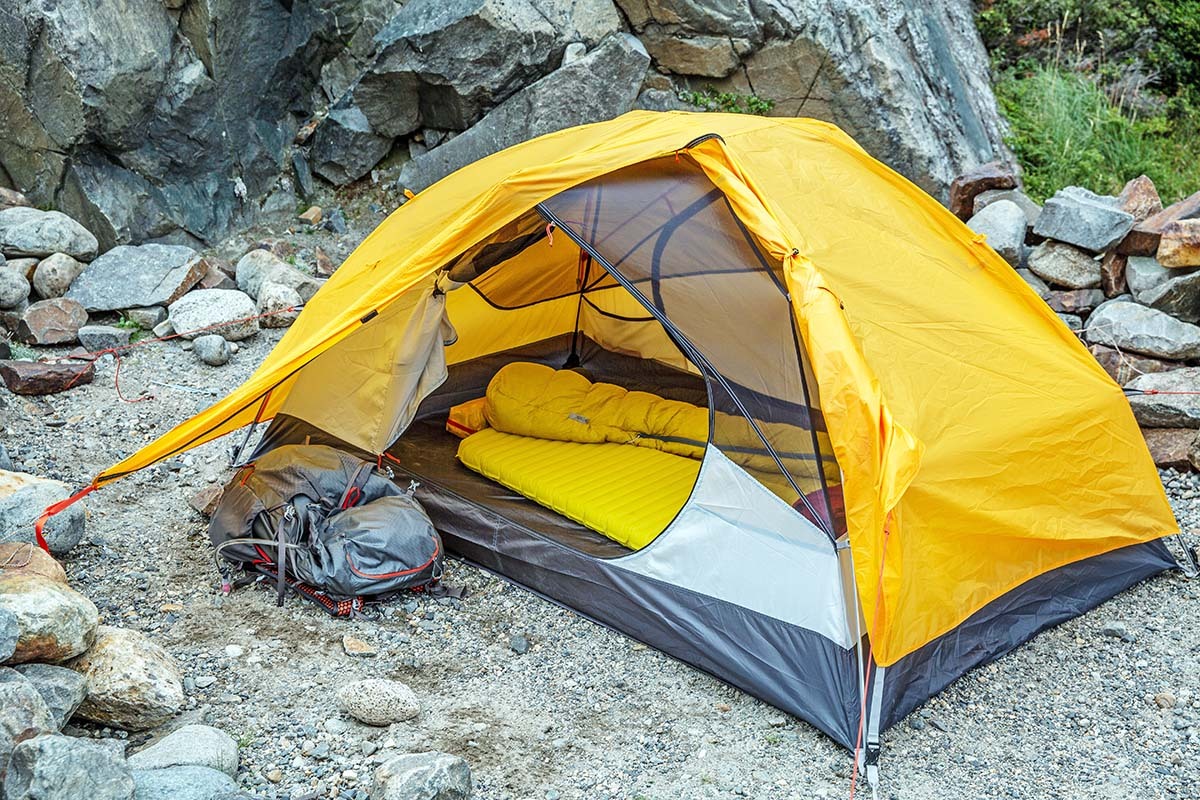
Looking at the competition, you’d be hard-pressed to beat the Trail Hut’s livability without bumping up in weight or cost. For a significant price increase, the Co-op’s Half Dome SL 2+ is slightly larger (90 x 54 in.) and over a pound lighter. Perhaps the closest competition to the Trail Hut 2 is the Marmot Tungsten: It's a bit taller at 42.1 inches (with a ridge pole), close in weight at 5 pounds 14.2 ounces all in, and only marginally more expensive. However, the Marmot's floor plan is tapered (from 54 in. at the head end to 46 in. at the feet), meaning you only have the option of sleeping shoulder-to-shoulder with your tentmate.
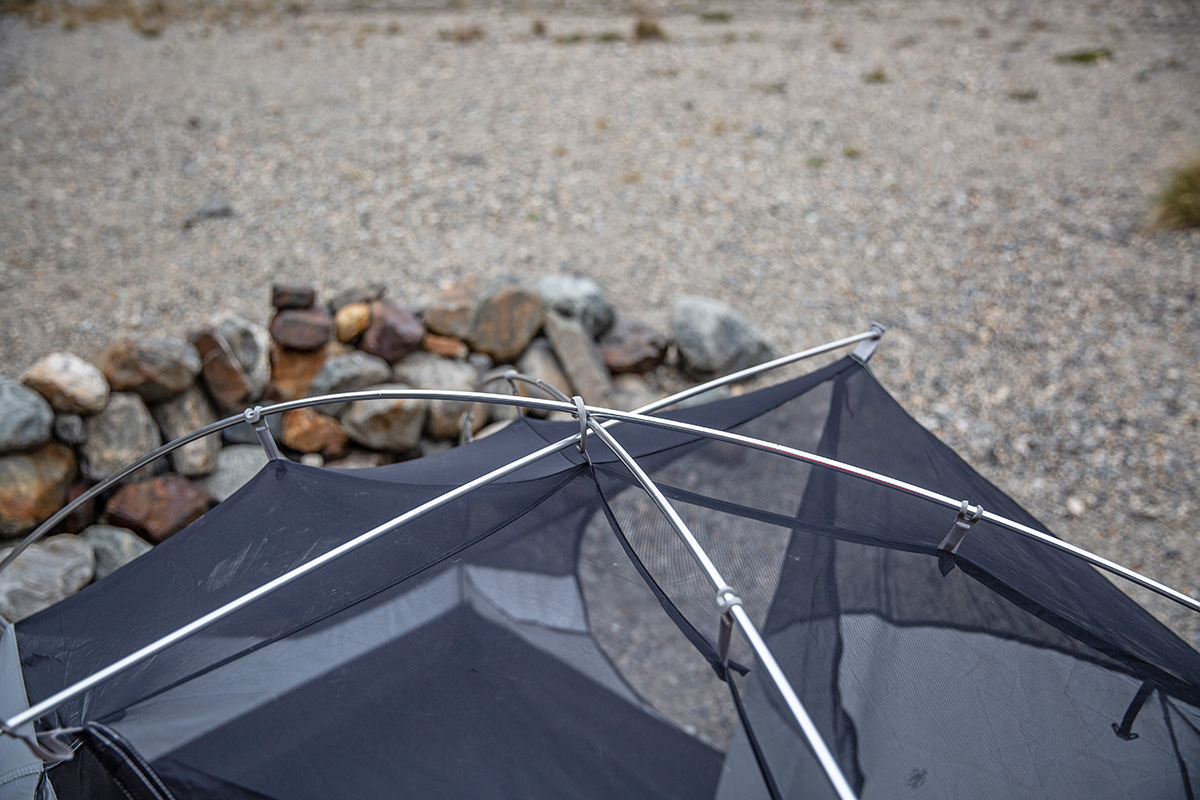
The Trail Hut 2 has a lot going for it, but where it falls short the most is in terms of weight. At 5 pounds 15 ounces all in, it’s roughly twice the weight of many premium backpacking tents, including models like the Big Agnes Copper Spur HV UL2 (3 lb. 2 oz.) and MSR Hubba Hubba 2 (3 lb. 4 oz.). But you’ll pay a pretty penny for the weight savings, with both of those tents costing several hundred dollars more than the Trail Hut 2. Plus, the Big Agnes and MSR are significantly less durable than the REI with thinner and more fragile fabrics and components. It’s easy to get caught up in the lightweight backpacking craze, but we think a tent like the Trail Hut 2 is perfectly serviceable for many hikers, unless you’re pushing yourself in terms of distance and speed or have good reason to keep your pack weight very low. Plus, you can always leave the removable footprint at home, which will shave off 7 ounces.
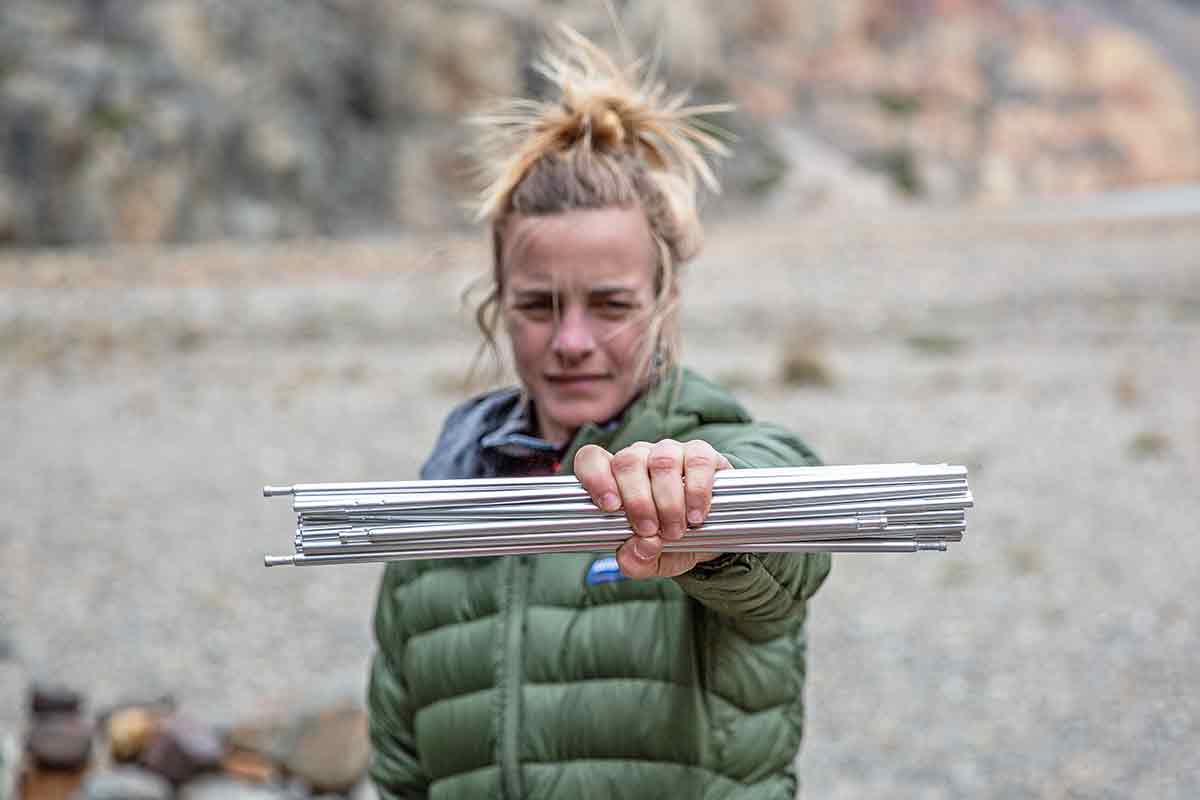
If you’re looking for the best combination of price and weight, the Big Agnes C Bar (4 lb. even) is our top recommendation. However, it’s a compromised design with just one door, a simplified pole structure, and a tapered floor plan, so we’d hesitate to recommend the C Bar for two-person use, and it’s a poor choice for windy conditions due to its more upright shape. Another tent worth noting is REI’s Half Dome SL 2+, which hits a nice middle ground at 4 pounds 11.5 ounces and features a spacious floor plan, decent durability, and great weatherproofing with a stable pole structure and full rainfly. As we mentioned above, the Half Dome is quite a bit more expensive than the Trail Hut, but the balance of features and price make it a very attractive option.
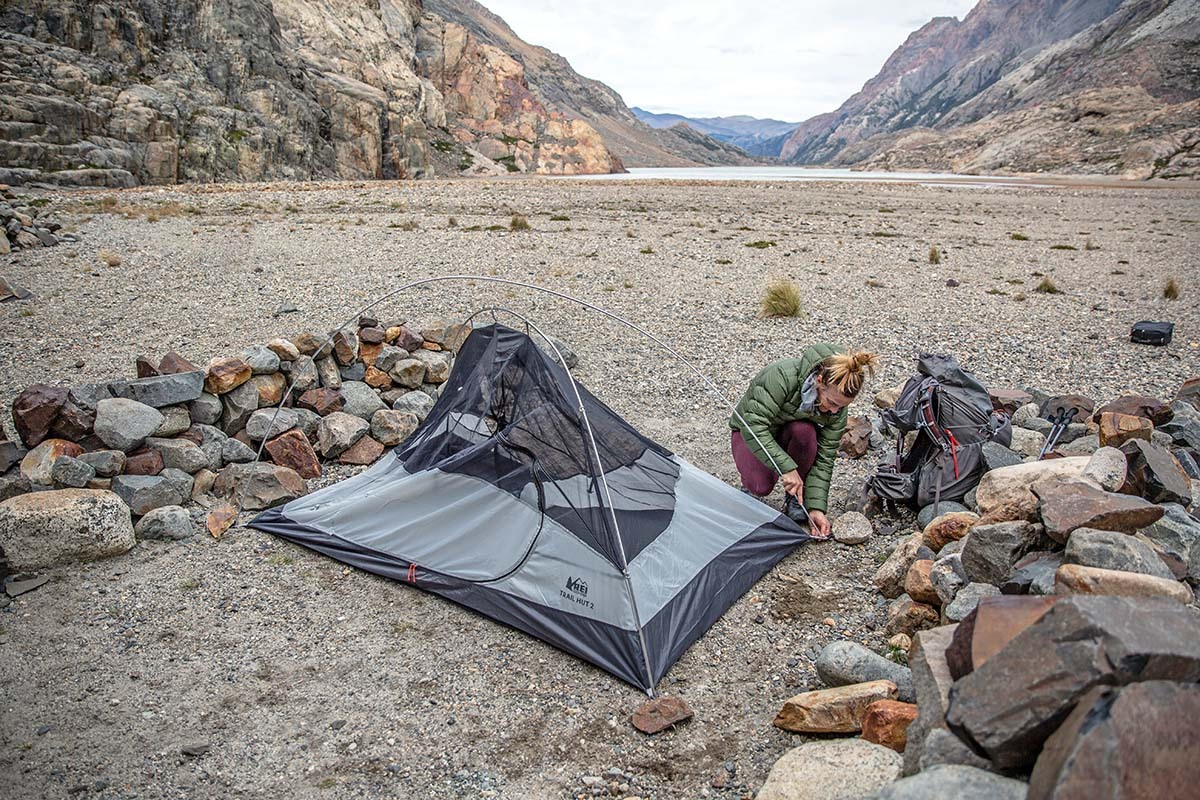
In terms of packed size, the Trail Hut 2 gets down to about 8 x 18 inches—including the poles and stakes—and with some careful packing, it can stuff down much smaller. I brought a 55-liter backpacking pack on our multi-day trek in Patagonia and was able to fit the tent inside while having ample space for all my other gear. For comparison’s sake, the aforementioned tents pack down slightly smaller: The Copper Spur’s packed size is 19.5 x 6 inches, the Hubba Hubba’s is 19 x 4.5 inches, and the C Bar checks in at 19 x 6 inches. If you’re really concerned about packed size, it’s worth getting a compression stuff sack for the Trail Hut 2 (you’ll have to pack the poles and stakes separately), as it could stuff down much smaller than its listed size.
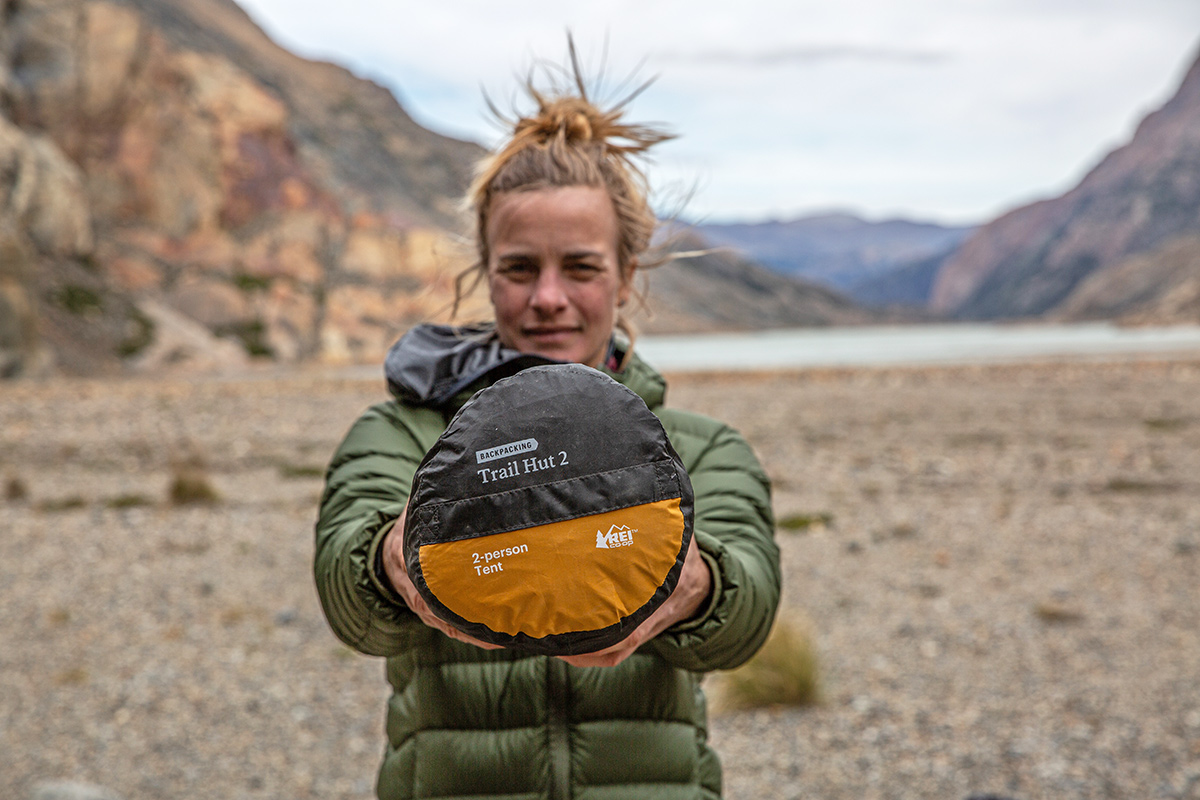
Budget tents like the Trail Hut 2 are compromised in terms of weight and packed size, but one place they really shine is durability. One of our best metrics for judging the durability of a tent is the denier (abbreviated "D"), or the thickness, of the fabric. In the case of the Trail Hut 2, you get a 66D floor and canopy walls, along with a 68D rainfly. The tent also comes with a removable footprint, which is helpful if you plan to camp in areas with sharp rocks or ground cover. For reference, lighter-weight designs like the Copper Spur (15x20D) and Hubba Hubba (20D) are much thinner. Bridging the gap between categories is the REI Co-op Half Dome SL 2+, which has a 40D floor.
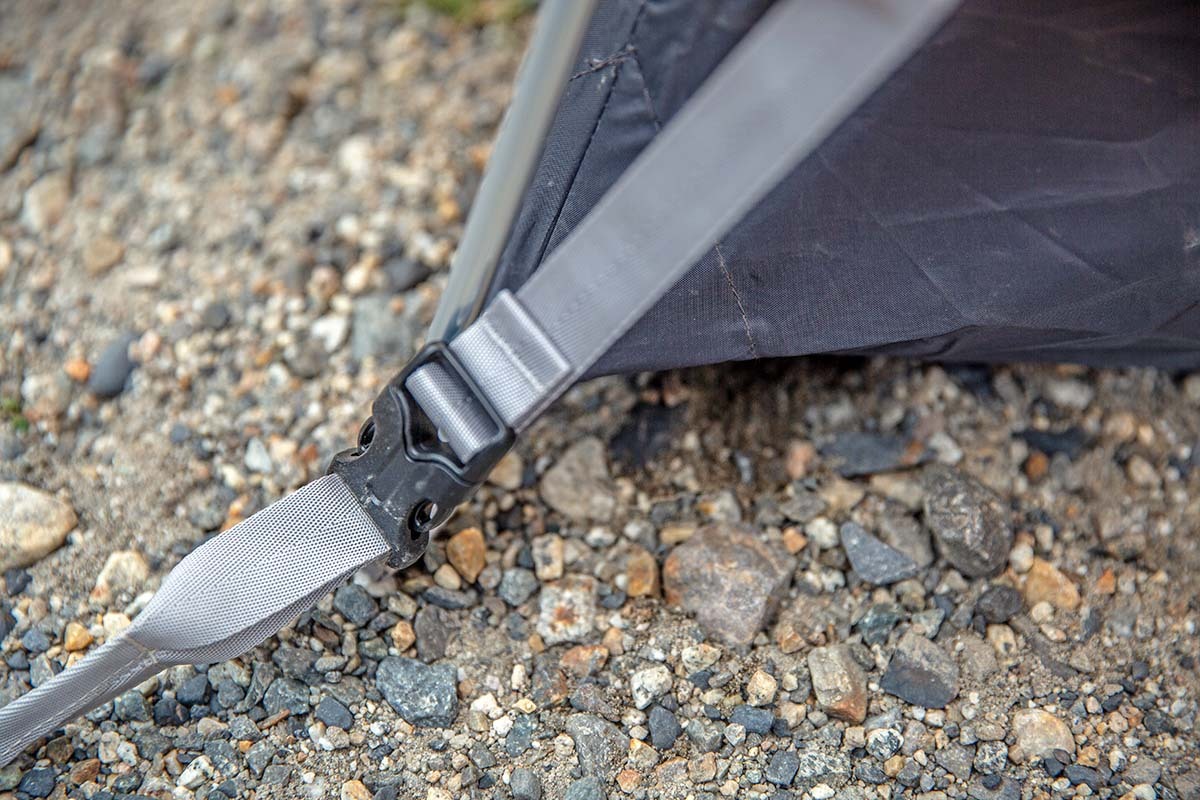
Southern Patagonia is known for having some of the world’s worst weather, and it fully delivered during our visit. Throughout nights of 60-plus-mile-per-hour winds and pouring rain, the Trail Hut surprised us with its rock-solid stability and waterproofing. To be fully transparent, I wasn’t sure what to expect from a relatively inexpensive tent—as the rest of the group set up their more premium designs (the MSR Hubba Hubba 2, Nemo Dagger, and MSR Freelite), I was sure that mine would fare the worst in the night’s storm. In the end, the Trail Hut was one of the best performers: It didn’t cave in from the side like the semi-freestanding tents, and it provided a quiet night’s sleep with minimal flapping. For one of the cheapest backpacking tents money can buy, it’s surprisingly ready for a serious storm.
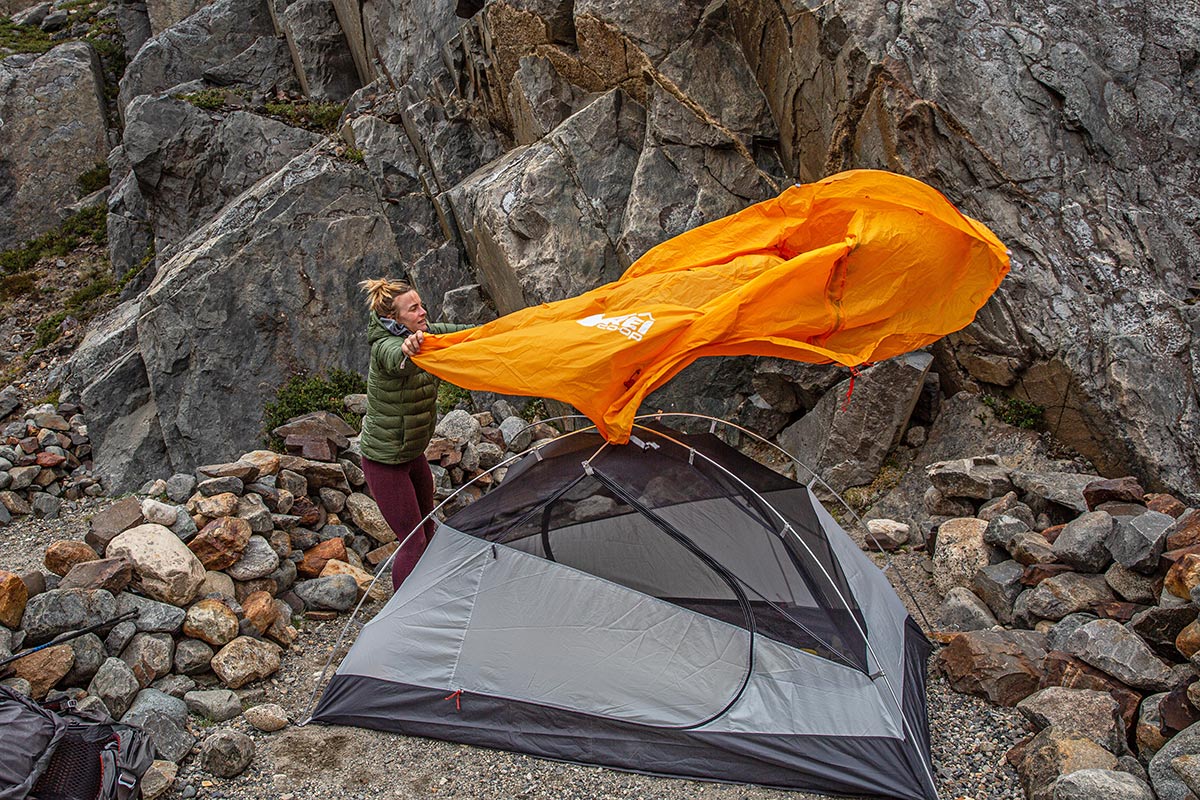
In terms of ventilation, the REI Co-op Trail Hut 2 is perfectly serviceable for all but the warmest days on the trail. The tent body features a moderate level of mesh, and the rainfly has a vent on each side that props open with a rigid strut. What’s more, the tent is designed so that the fly doors zip all the way to the apex, allowing you to roll them up on dry nights for additional ventilation. If you’re particularly concerned about keeping good airflow, it might be worth considering a more mesh-heavy design or a tent with a thinner rainfly, but we were impressed with the Trail Hut and have spent multiple nights inside with no condensation issues.
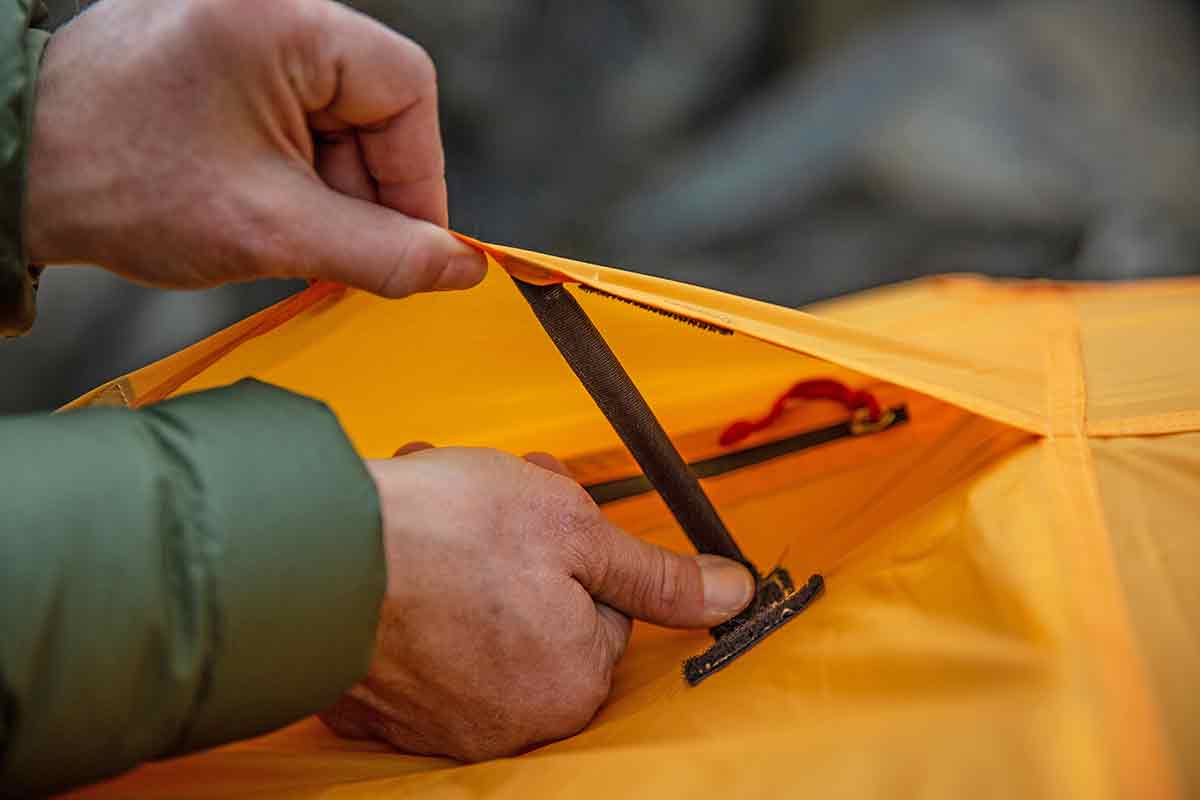
We break tent storage down into two main categories: interior and exterior. In terms of inside storage, the Trail Hut 2 was relatively disappointing, with just one pocket on each side. REI added four loops at the ceiling peak to provide additional options, but it’s up to the user to add a mesh panel or string paracord between the loops. Compared to other tents, this is a fairly minimal feature set—for comparison, the REI Half Dome SL 2+ has a pocket at all four corners and two roof pockets. To be sure, we appreciate interior storage for staying organized and keeping small items like headlamps and stuff sacks easy to find, and we definitely found the Trail Hut lacking. But while inconvenient, this isn't a total dealbreaker for us.
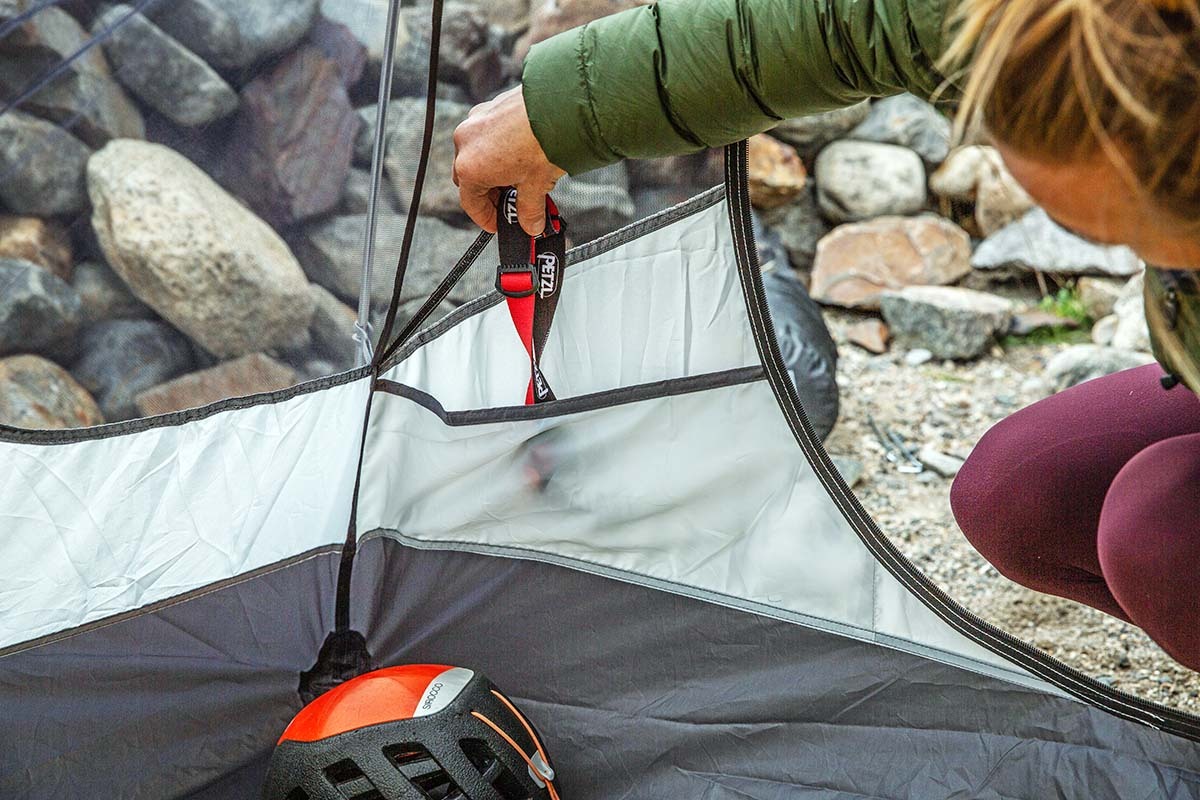
The Trail Hut features two vestibules, which provide a total of about 19 square feet of storage. It’s possible to find tents with larger vestibules (the REI Half Dome SL 2+ has 22.5 sq. ft.), but 18 to 20 square feet is fairly standard among two-door models. This covered area is vital for storing wet and dirty items like your pack or hiking shoes and can go a long way toward making the sleeping area feel more spacious. For couples or hiking partners sharing a tent, we definitely recommend a two-door, two-vestibule design, but you can save weight by dropping down to one door and vestibule.
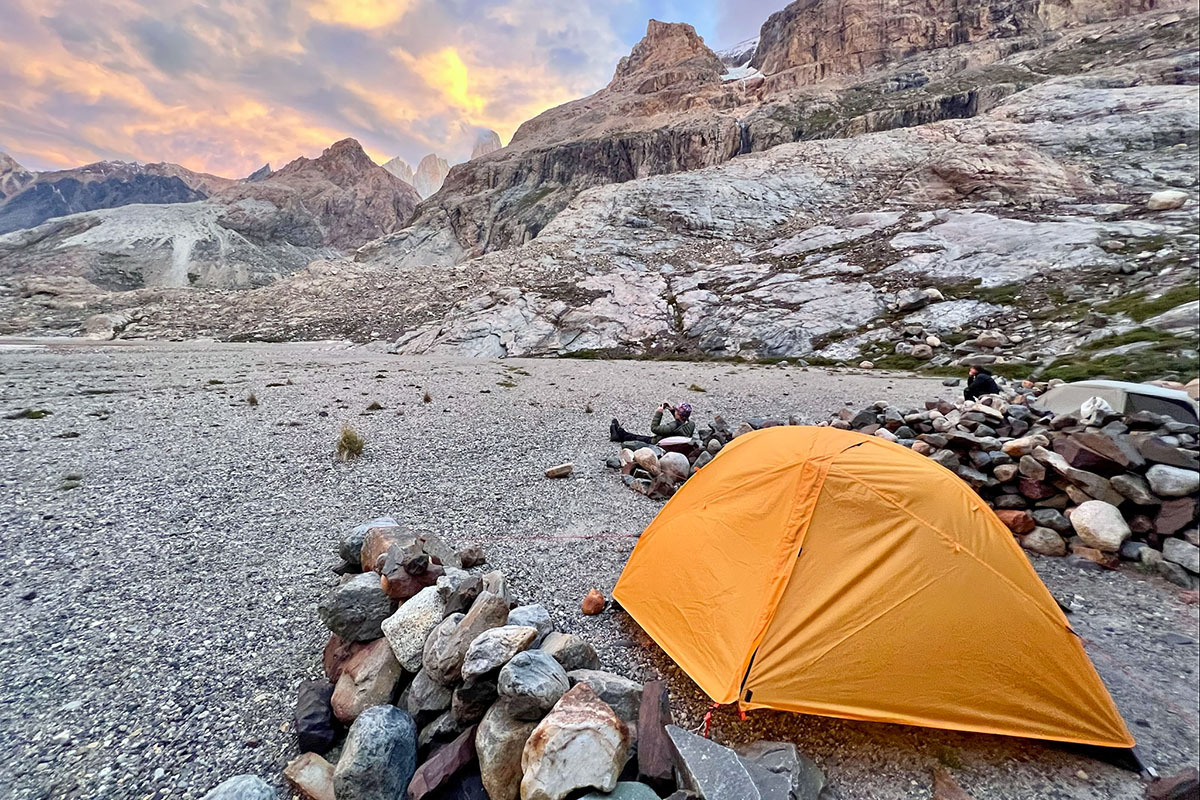
REI designed the Trail Hut 2 to be very easy to set up, with a symmetrical design, attached footprint (removable), two identical poles that cross at the apex, and a shorter ridge pole that slides in afterward. We’re big fans of getting a taut pitch, and the Trail Hut was easy to tweak to perfection, with cinches at each corner to tighten the fly and a nice array of guy-out points (with included guy lines). Sure, you don’t get color-coded corners or a hubbed pole like you might get with a more premium tent, but we found the Trail Hut 2 a breeze to set up and take down.
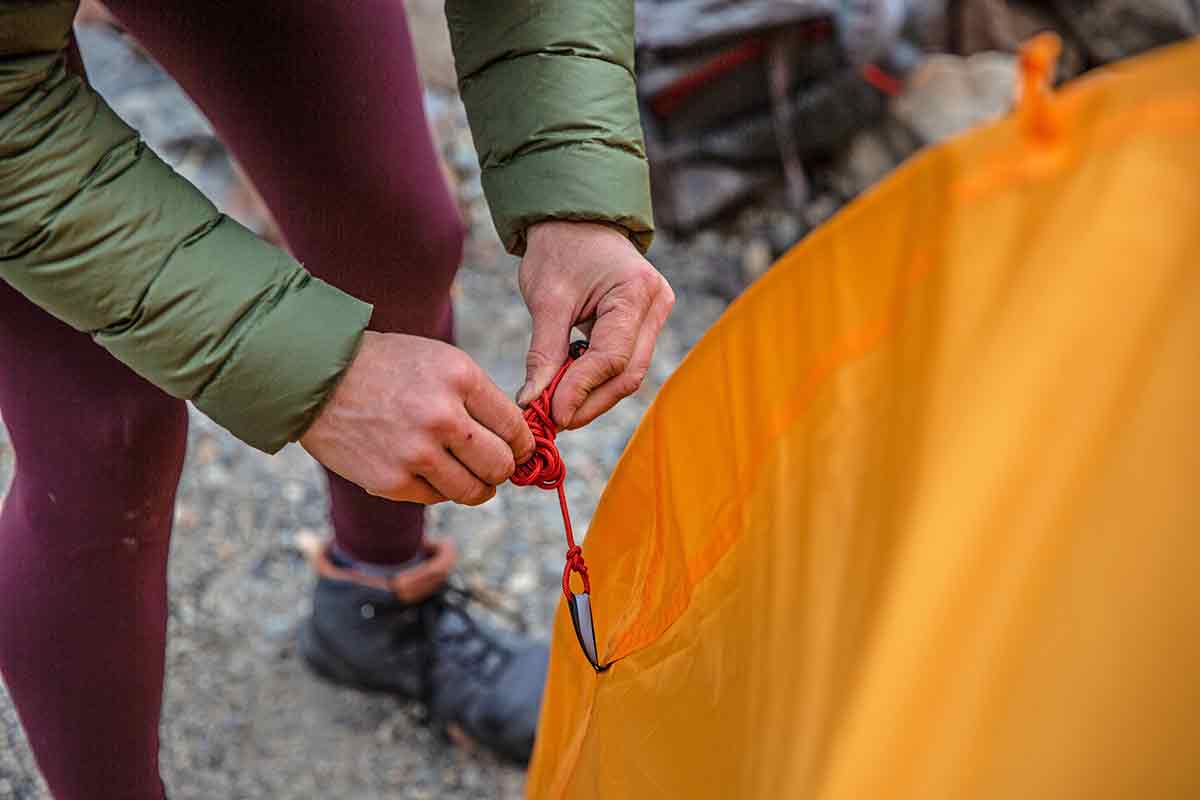
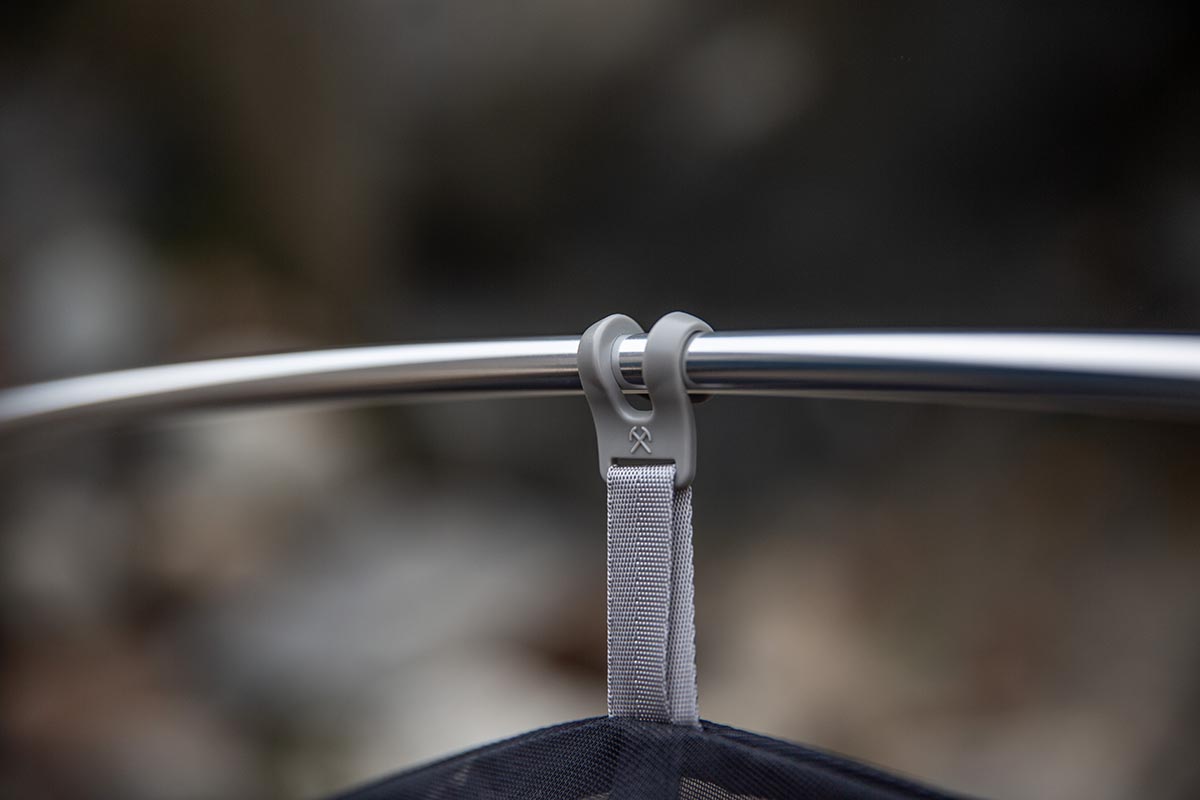
| Tent | Price | Weight | Floor Dimensions | Floor Denier | Capacities | Footprint* |
|---|---|---|---|---|---|---|
| REI Co-op Trail Hut 2 | $229 | 5 lb. 15.0 oz. | 88 x 52 in. | 66D | 2P | Yes |
| REI Co-op Half Dome SL 2+ | $349 | 4 lb. 11.5 oz. | 90 x 54 in. | 40D | 2+P, 3+P | Yes |
| REI Co-op Trailmade 2 | $199 | 5 lb. 7.0 oz. | 88 x 52 in. | 68D | 1P, 2P | Yes |
| Marmot Tungsten 2P | $249 | 5 lb. 14.2 oz. | 88 x 54/46 in. | 68D | 1P, 2P, 3P, 4P | Yes |
| Big Agnes C Bar 2 | $250 | 4 lb. 0 oz. | 86 x 52/42 in. | 68D | 2P, 3P | No |
| MSR Hubba Hubba 2 | $550 | 3 lb. 4.0 oz. | 84 x 50 in. | 20D | 1P, 2P, 3P | No |
*Editor's note: "Footprint" indicates that a footprint is included with the tent purchase.
REI Co-op’s Trail Hut 2 is one of the best values in backpacking tents, but there’s no shortage of attractive alternatives. Sticking within REI’s lineup, we love the Half Dome SL 2+. The Co-op consistently nails it with their tent designs, and the Half Dome is the cream of the crop for those willing to spend up for a great balance of weight, interior space, and premium fit and finish. The Half Dome adds 2 inches to each of Trail Hut 2’s dimensions (90 x 54 in.) to provide ample room for two sleepers (and an extra child or canine if you’re willing to make a tight squeeze). At 4 pounds 11.5 ounces, it’s over a pound lighter than the Trail Hut—shaving weight through the use of thinner materials throughout—and features larger vestibules with contoured doors that provide a generous opening. Finally, while storage is one of our primary gripes with the Trail Hut, the Half Dome is much better equipped with six interior pockets. It’s significantly pricier at $349, but the Half Dome nevertheless is a nice middle ground between the Trail Hut and the more premium competition.
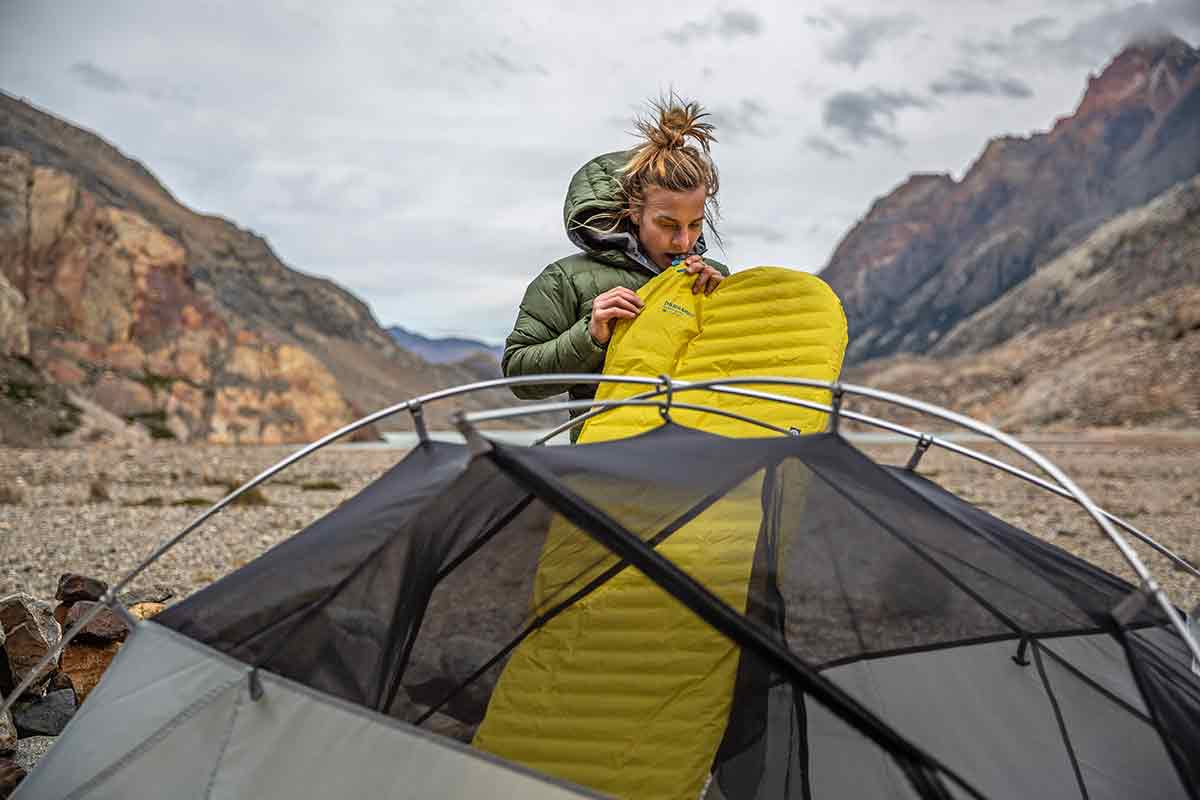
Staying within REI's lineup, their newer Trailmade 2 costs even less than the Trail Hut at $199 (including a footprint). Impressively, the Trailmade is also a considerable 8 ounces lighter while offering the same floor dimensions and similarly thick (68D) materials. However, the devil is in the details: In testing the Trailmade, we came away disappointed by the tent's overall quality, construction, and materials—including a very bulky stake set and stuff sack, limited venting (paired with a swampy coated polyester fly), and a design that’s seemingly impossible to set up fully taut (for more, see our in-depth Trailmade 2 review). In the end, the Trailmade feels similar to what you’d expect from a bargain-basement design purchased at a big-box retailer, while the Trail Hut outperformed its price tag in testing.
Looking closer at the budget competition, Marmot’s Tungsten 2P is the Trail Hut’s closest rival. For $20 more, the Tungsten checks in at a similar weight but features a tapered floor plan (88 x 54/46 in.). This translates to less interior space—you’ll have to sleep shoulder-to-shoulder with your tentmate rather than head-to-toe—and more compromised wind resistance. But like the REI, the Tungsten includes a ridge pole for steeper walls and increased headroom, plus it’s a bit taller with a 42.1-inch peak height (vs. the REI’s 40 in.). We still give the edge to the Trail Hut for it’s better price and interior space, but the Marmot is an attractive alternative that's offered in a wider range of capacities.
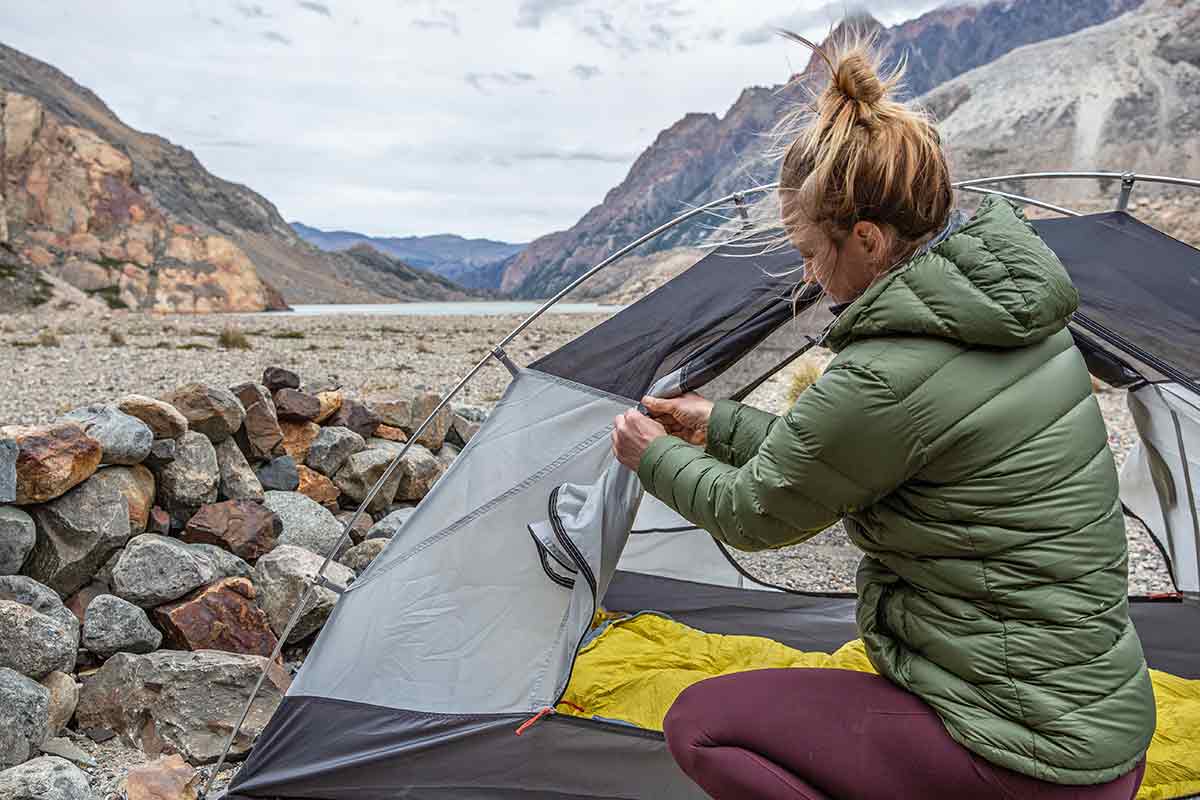
If you’re looking for the best combination of price and weight, the Big Agnes C Bar ($250) is about as light as it gets within the budget category. At 4 pounds even, it’s almost 2 pounds lighter than the Trail Hut 2 and a bit more packable, too. But our praise stops there: The C Bar is a compromised design with just one door, a simplified pole structure, and a tapered floor plan. Unless you’re traveling solo or ready to get really close with your partner, we don't recommend a one-door tent. Further, while the simplified pole structure (just one pole down the spine of the tent) is great for shaving weight, it’s a poor performer in heavy winds and has a tendency to cave in on the sides. Added up, the C Bar is a nice option for those looking for a 1-person tent, but we’d hesitate to recommend it for most parties of two, especially when spending up can get you a much more spacious design at a lighter weight.
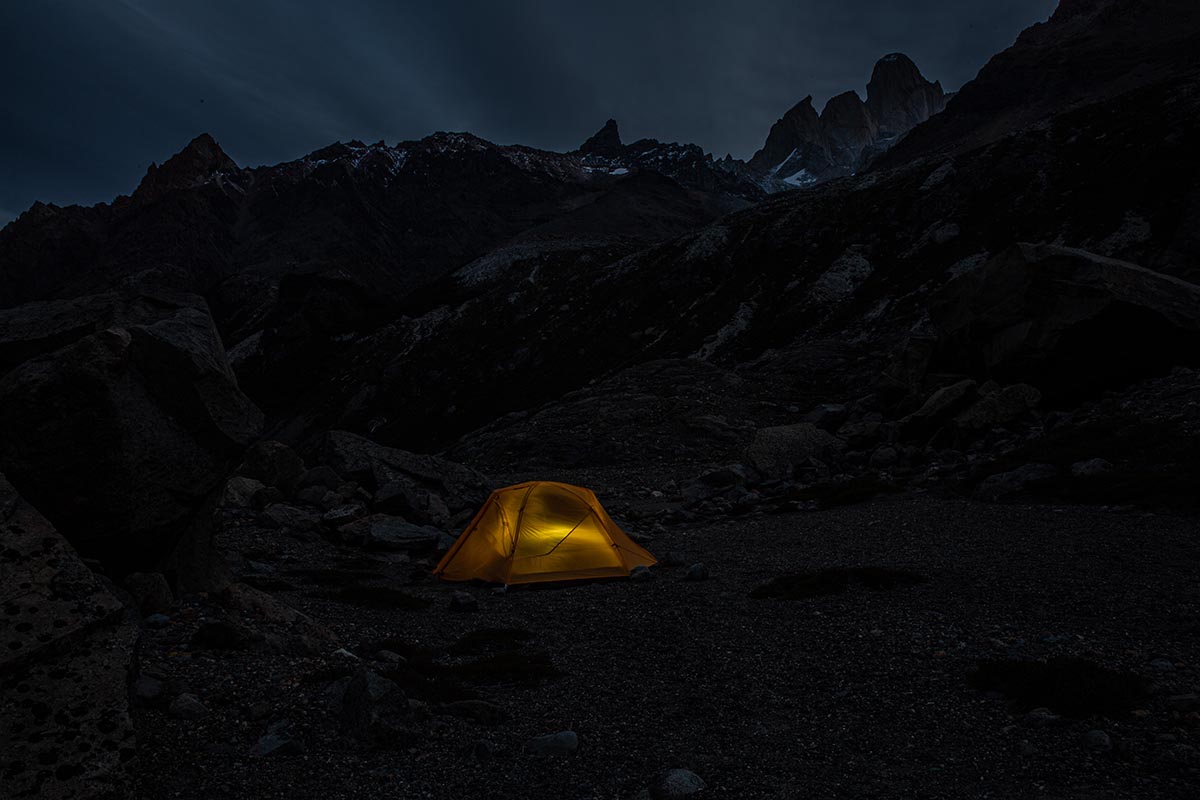
Lastly, it’s worth comparing the Trail Hut to a premium tent to give you a sense for how it stacks up. Year after year, one of the most popular designs on the market is the MSR Hubba Hubba. At $550, the Hubba Hubba is over twice the price of the Trail Hut, but it’s more than 2-and-a-half pounds lighter (3 lb. 4 oz.) while offering the same steep walls and reliable weather protection. You lose a bit of interior space with the MSR’s 84- x 50-inch floor plan, the triangular doors can take some getting used to, and the fabrics are fairly thin at 20D, but these are all concessions serious backpackers are willing to make for weight savings. That said, unless you have reason to need the best of the best, the Trail Hut 2 is a high-quality alternative that will save you a nice chunk of change.
Editor’s note: We usually provide a live price comparison table below our outdoor gear reviews, but the Trail Hut 2 is sold exclusively by REI Co-op. You can see the Trail Hut 2 page here and support us in the process. Thanks!